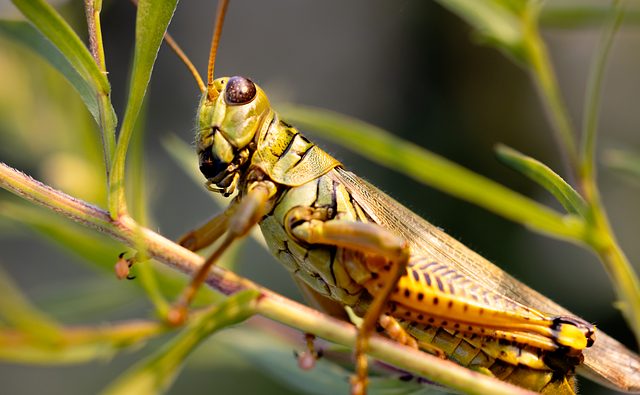Stinging insect infestations can be managed by sealing entry points, maintaining cleanliness, using natural deterrents, and educating family members. Chemical treatments like insecticides are effective but require responsible use. Natural solutions include essential oils and beneficial bugs, offering safer, eco-friendly alternatives for long-term management of stinging insects.
Are you tired of dealing with painful stings and irritating pest infestations? Understanding and tackling stinging pest problems head-on is crucial. This comprehensive guide delves into effective treatments for eliminating these pesky intruders, focusing on both chemical and non-chemical solutions. From identifying common stinging insect behaviors to implementing preventive measures, we provide practical insights for successful pest control. Discover powerful insecticides and explore natural alternatives, ensuring a safe and sting-free environment.
Understanding Stinging Pest Infestations: Common Types and Behaviors
Stinging pest infestations can be a nuisance and pose health risks, especially with species like bees, wasps, and hornets. Understanding these infestations begins by recognizing their common types and behaviors. Among stinging insects, social bees, such as honeybees and bumblebees, live in colonies with a queen, workers, and drones. Wasps and hornets, on the other hand, are solitary or semi-social, with each female having the ability to build her own nest.
These pests are attracted to food sources, water, and places that provide shelter and protection. Common behaviors include nesting in attics, walls, or trees, with some species even entering homes through small openings. During the warmer months, they are more active and aggressive, stinging when threatened or disturbed. Proper pest control for stinging insects involves identifying nest locations, using appropriate treatments, and preventing reinfestations by eliminating potential food and shelter sources.
Preventive Measures: How to Keep Pests at Bay
Stinging pest infestations can be a nuisance, but with proper preventive measures, you can keep them at bay. One of the most effective ways to manage these pests is to eliminate their access points and hiding places. Regularly inspect your home for any cracks, gaps, or openings that might serve as entry points for stinging insects like bees, wasps, or hornets. Seal these areas with caulk or weatherstripping to create a pest-free barrier. Additionally, maintain a clean environment by promptly cleaning up food residues and eliminating sources of water, as these attract pests.
In terms of pest control for stinging insects, it’s also beneficial to trim trees and shrubbery regularly, removing any dead wood or overhanging branches that might provide shelter for nests. Keep your lawn mowed and free from debris, as well. Using pest-repelling plants like lavender, citronella, or marigolds around your property can also act as a natural deterrent. Lastly, educate your family members about the importance of not disturbing visible nests to prevent unnecessary encounters with these stinging pests.
Chemical Treatments: Effective Insecticides for Severe Infestations
When dealing with severe stinging insect infestations, chemical treatments often prove essential as a first line of defense in effective pest control for stinging insects. Insecticides specifically designed to target these pests offer powerful solutions, ensuring a swift and comprehensive eradication. Such treatments are particularly beneficial for large-scale or stubborn cases, where other methods may be less efficient.
The market offers a range of insecticides formulated with active ingredients known for their potency against stinging insects, such as pyrethroids, neonicotinoids, and organophosphates. These chemicals act by interfering with the nervous systems of insects, providing quick relief from infestations. However, due to potential environmental and health impacts, it’s crucial to use these products responsibly, following manufacturer guidelines, and prioritizing safety measures during application.
Non-Chemical Options: Natural Solutions for Safe Pest Control
When it comes to dealing with stinging pest infestations, many individuals prefer non-chemical options that offer a safer and more eco-friendly approach to pest control for stinging insects. Natural solutions have gained popularity due to their effectiveness in managing these annoying intruders without resorting to harmful chemicals. One of the most common non-chemical treatments involves utilizing essential oils, such as citronella, peppermint, and lavender, which have natural insecticidal properties. These oils can be applied topically or diffused in the affected areas to deter stinging insects like bees, wasps, and hornets.
Another powerful tool in the arsenal of natural pest control for stinging insects is beneficial bugs. Introducing predatory insects, such as certain species of spiders, lacewings, and parasitoid wasps, can help reduce the population of pests. These beneficial creatures feed on or lay eggs within the stinger eggs, disrupting their life cycle. This biological control method is highly effective and environmentally friendly, providing a long-term solution to keep these pesky invaders at bay.
When dealing with stinging pest infestations, a multi-pronged approach offers the best results. Understanding the specific type of pest and their behaviors is key. Preventative measures can significantly reduce risks, while chemical treatments provide strong solutions for severe cases. However, for those seeking eco-friendly options, non-chemical alternatives offer effective, safe pest control. By combining these strategies, individuals can effectively manage and eliminate stinging pest infestations, ensuring a more comfortable living environment. Remember, professional guidance is always valuable when dealing with pest control for stinging insects.
